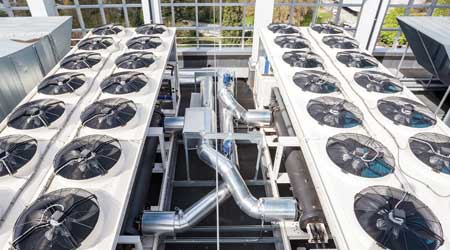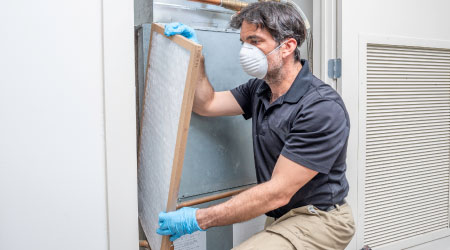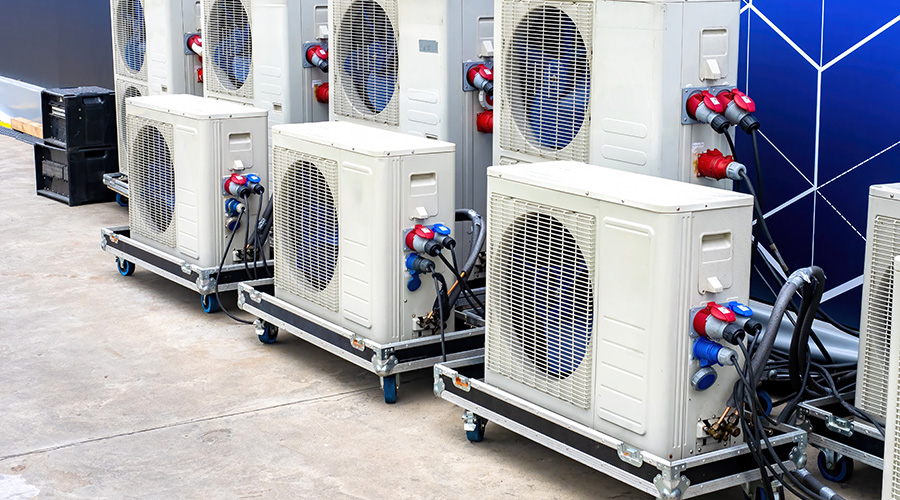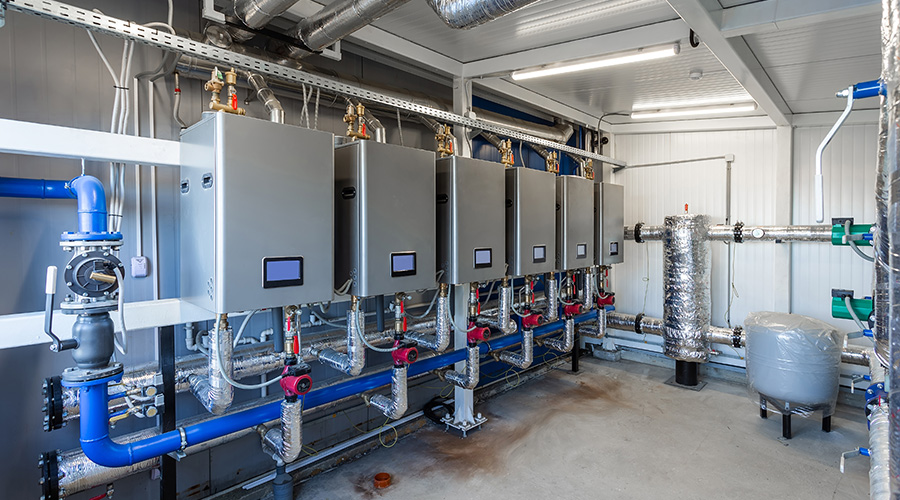5 Principles of Energy-Efficient Cooling Design
In new buildings, accurate modeling, rightsizing the system, and recovering energy whenever possible are keys to the most efficient cooling system.
Accounting for 39 percent of building energy use in the United States, HVAC systems are a first choice when looking to reduce operational expenditure. According to the National Institute of Building Sciences, the use of high-performance HVAC equipment can reduce energy, emissions, and costs anywhere from 10 to 40 percent.
Designing new or just attempting to reduce energy on existing commercial cooling systems, can be a complex task. For a facility manager, that complexity means important priorities are at risk of getting lost amid concerns about cost and scheduling. Aligning the design efforts with the following strategies will help any facility manager keep building priorities in line with energy efficiency goals.
Of course, it’s easiest to reduce energy when you’re starting with a clean slate. There are a range of techniques and strategies that can promote greater energy and operational savings, specific to each facility’s climate, existing parameters, and architectural design.
1. Start with an accurate model. Today, 3D software can model systems more accurately than in the past. No building is constructed perfectly, but an accurate model reduces the potential for issues during construction that can affect how efficiently a system operates. Every additional bend and turn in ductwork and piping requires more energy from the pump or fan. This is especially true immediately downstream of any fan or pump, where the effect of a turn can result in 10 times or greater drop in pressure.
The model is only as accurate as the information put into it, so the building’s architects and engineers must work closely to develop an accurate model highly reflective of precise building measurements.
2. Match the load. Completing an accurate load calculation to right-size equipment is critical. Too often designers are tempted to add multiple safety factors, causing the equipment to be oversized and operate poorly. Determining actual building loads, including lighting power densities, heat-generating technologies, and occupancy provides realistic heating, cooling, and ventilation load measurements. Once the true load is understood, right-sized equipment can be purchased, potentially lowering the upfront costs.
It's important to understand current and emerging trends in energy use. Often, older chiller plants were designed to accommodate lighting of 3 watts/square foot or higher. Today, a typical lighting installation for office buildings is 0.9 watts/square foot. That’s a 70 percent reduction in load.
However, with evolving technology, buildings are accommodating a much higher occupancy density than before, increasing ventilation, cooling, and heating demand. While a design team may be tempted to reduce or increase the chiller plant capacity based on specific changes, ensure that an ANSI/ASHRAE/ACCA Standard 183 load calculation has been completed to determine peak design loads as well as optimal efficiency throughout the cooling season.
3. Model energy use throughout the year. Calculating the load is important but understanding equipment efficiencies over the entire load profile may lend more insight into an efficient design. Peak load by design only occurs 0.04 percent of the year, which equates to 3.5 hours annually. The other 99.6 percent of the year, the equipment is still operating, but not at design capacity. Modeling how much energy is expended over a sample year may better inform decisions about the best control strategies.
For example, the existing control strategy for a plant of three or more machines often relies on a single piece of equipment to shoulder the load until it is near its peak output, at which time a second machine is brought online. By analyzing the chiller’s unique efficiency curves and turndown ability, the plant’s efficiency may be improved dramatically by simply bringing on chillers sooner to share the load more evenly. Often, chiller plants are designed with N+1 redundancy, to include an extra chiller in case of failure. Utilizing the backup chiller to share the load is another way of improving plant efficiency.
4. Avoid overheating, overcooling, and simultaneous heating and cooling. Proper zoning in a floorplan is critical for saving energy and maintaining occupant comfort. At a minimum, the energy code requires zoning for perimeter areas facing different cardinal directions. In addition to energy code, space use needs to be considered as well.
It is important to be conscious of how first-cost decisions affect energy use. Baseboard heat is typically designed to meet minimum energy code, potentially resulting in the baseboard only having one control valve across several terminal boxes responsible for cooling. In this arrangement, the baseboard may overheat a zone that is fully occupied, triggering the terminal box to open its damper and provide additional cooling.
There are several control strategies that may be used to prevent simultaneous heating and cooling. The baseboard’s control valve may be controlled as a second stage of heat, for example, opening based on outside air temperature in lieu of one of the several thermostats inside.
New fan technology in fan powered boxes and air handling units allows for improved performance throughout the operation range. The advent of electronically commutated motors has reduced noise and improved fan efficiency. Improving efficiency reduces the generation of waste heat.
5. Recover energy whenever possible. Certainly, energy recovery products are plentiful, but they typically must be considered at the early stages of a project. A well-intentioned design team can be waylaid by poor placement of general exhaust that may have otherwise been able to be routed through an energy recovery ventilator. Despite the first-cost, payback on energy recovery ventilators is typically less than five years.
Depending on facility type, it may be possible to rely on an energy recovery device to downsize equipment which may bring the first cost down substantially and reduce the payback period.
Related Topics:













